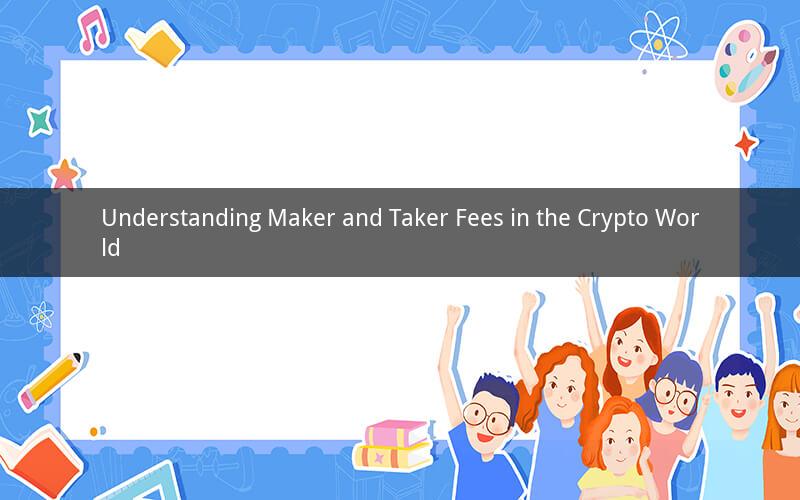
In the rapidly evolving crypto market, it is crucial to grasp the concepts of maker and taker fees. These fees are integral to the functioning of exchanges and can significantly impact traders' profitability. This article delves into the intricacies of maker and taker fees, their differences, and their impact on the crypto trading landscape.
What are Maker and Taker Fees?
Maker and taker fees are charges imposed by cryptocurrency exchanges for executing trades. The primary difference between the two lies in the nature of the trade. A maker fee is charged to the individual who places an order to buy or sell a cryptocurrency, while a taker fee is imposed on the person who executes the trade by filling the order.
The Role of Makers and Takers
Makers and takers play distinct roles in the trading process. Makers provide liquidity to the market by placing limit orders that sit on the order book, ready to be filled when another trader decides to execute a trade. Takers, on the other hand, execute trades by filling the orders placed by makers.
Why do Exchanges Charge these Fees?
Exchanges charge maker and taker fees to cover their operational costs and provide a fair trading environment. By doing so, they ensure that the market remains efficient and that traders can execute their trades swiftly.
The Impact of Maker and Taker Fees on Trading
1. Market Efficiency
Exchanges aim to maintain an efficient market by encouraging liquidity providers (makers) to participate. By offering a lower maker fee, exchanges incentivize traders to place limit orders, thereby increasing market depth and liquidity.
2. Cost of Trading
The fees can significantly impact the cost of trading. A higher taker fee can reduce a trader's profitability, especially in high-frequency trading scenarios. Conversely, a lower maker fee can attract more liquidity providers, potentially leading to lower taker fees.
3. Market Manipulation
Exchanges often implement anti-manipulation measures to prevent market abuse. By imposing different fees on makers and takers, exchanges can discourage traders from engaging in suspicious trading activities.
Comparing Maker and Taker Fees
The fees vary across different exchanges, and it is essential to compare them before choosing a platform. Generally, maker fees are lower than taker fees, but the differences can be substantial. Some exchanges offer tiered fee structures based on trading volume, while others have fixed fees for both maker and taker trades.
How to Minimize the Impact of Maker and Taker Fees
1. Choose the Right Platform
Select an exchange that offers competitive fees and a user-friendly interface. Research various platforms and compare their fee structures to find the best option for your trading needs.
2. Optimize Trading Strategy
By optimizing your trading strategy, you can minimize the impact of fees. This includes setting appropriate order sizes, avoiding high-frequency trading, and utilizing limit orders to become a maker.
3. Stay Informed
Stay updated on market trends and exchange policies. This will enable you to make informed decisions regarding your trading activities and fees.
5 Questions and Answers
1. Q: Are maker and taker fees the same across all exchanges?
A: No, fees vary across exchanges. It is essential to research and compare the fee structures of different platforms.
2. Q: Why are maker fees generally lower than taker fees?
A: Maker fees are lower to incentivize traders to provide liquidity to the market. This encourages a more efficient and competitive trading environment.
3. Q: Can I avoid paying taker fees by becoming a maker?
A: Yes, by placing limit orders and becoming a maker, you can avoid taker fees. However, it is essential to consider the potential impact of market manipulation and other risks associated with being a liquidity provider.
4. Q: How can I minimize the impact of maker and taker fees on my trading?
A: To minimize the impact of fees, choose a platform with competitive fees, optimize your trading strategy, and stay informed about market trends and exchange policies.
5. Q: Are there any exchanges that do not charge maker or taker fees?
A: Some exchanges offer reduced or no fees for certain types of trades. However, these exchanges may have other limitations or higher trading costs, so it is essential to research and compare your options carefully.